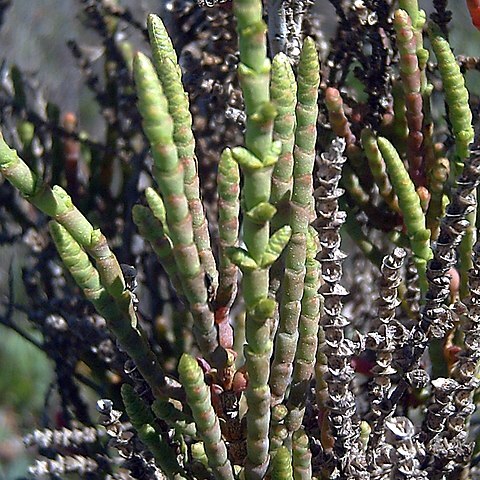Perennial herbs or thinly woody shrubs, erect or decumbent, glabrous, seemingly leafless, apparently built up of numerous, superposed, more or less tubular segments which are green and succulent and ultimately shrivel and fall away from the stem; each segment at apex forming a little cup, usually with two short teeth, embracing the base of the next higher segment. Fertile segments aggregated into spikes at ends of stem and lateral branches, latter often very short; spikes ultimately disarticulating or not. Flowers minute, hermaphrodite or unisexual, normally in threes, free or nearly so, a pair of threes to each fertile segment, the threes on opposite sides and immersed. Calyx irregularly toothed or lobed and obtusely pyramidal at apex. Stamens 1, rarely 2, per flower. Fruits with membranous or horny pericarp. Seeds “vertical” (i.e. laterally compressed); testa membranous or hard, glabrous, papillose or smooth. Embryo along one side of the seed, slightly curved or shaped like a comma, the radicle pointing downwards. Endosperm well-developed, lateral.

